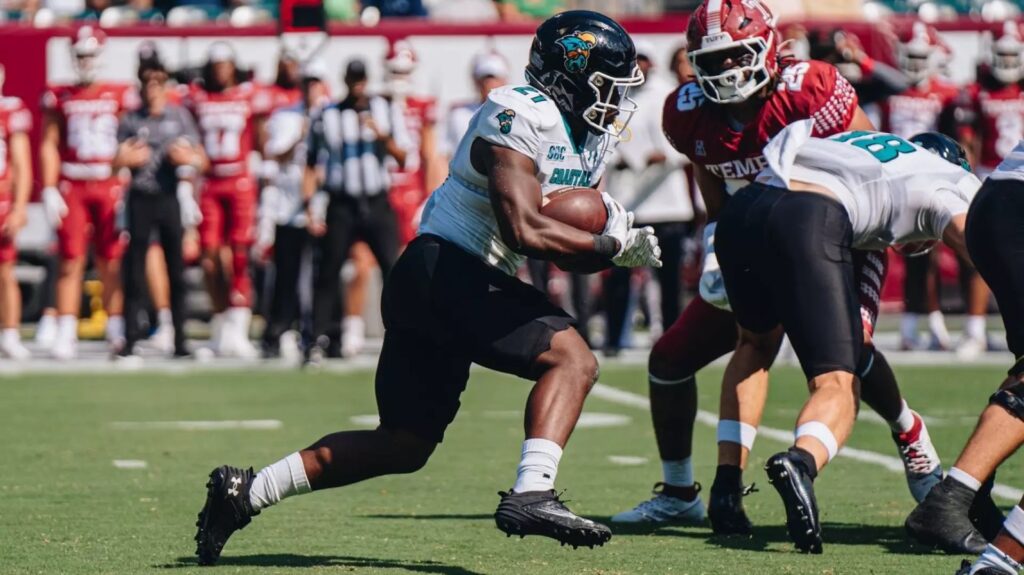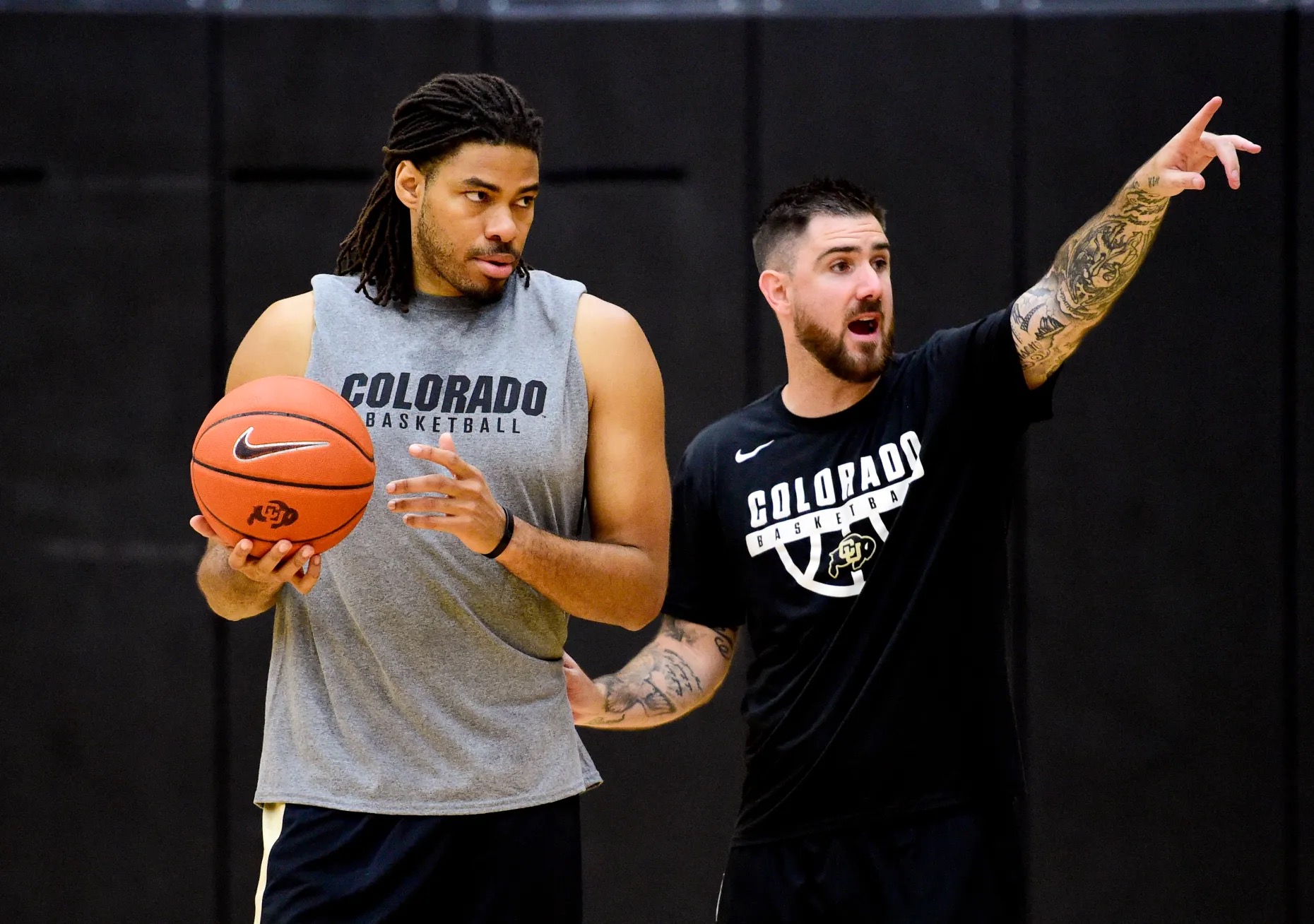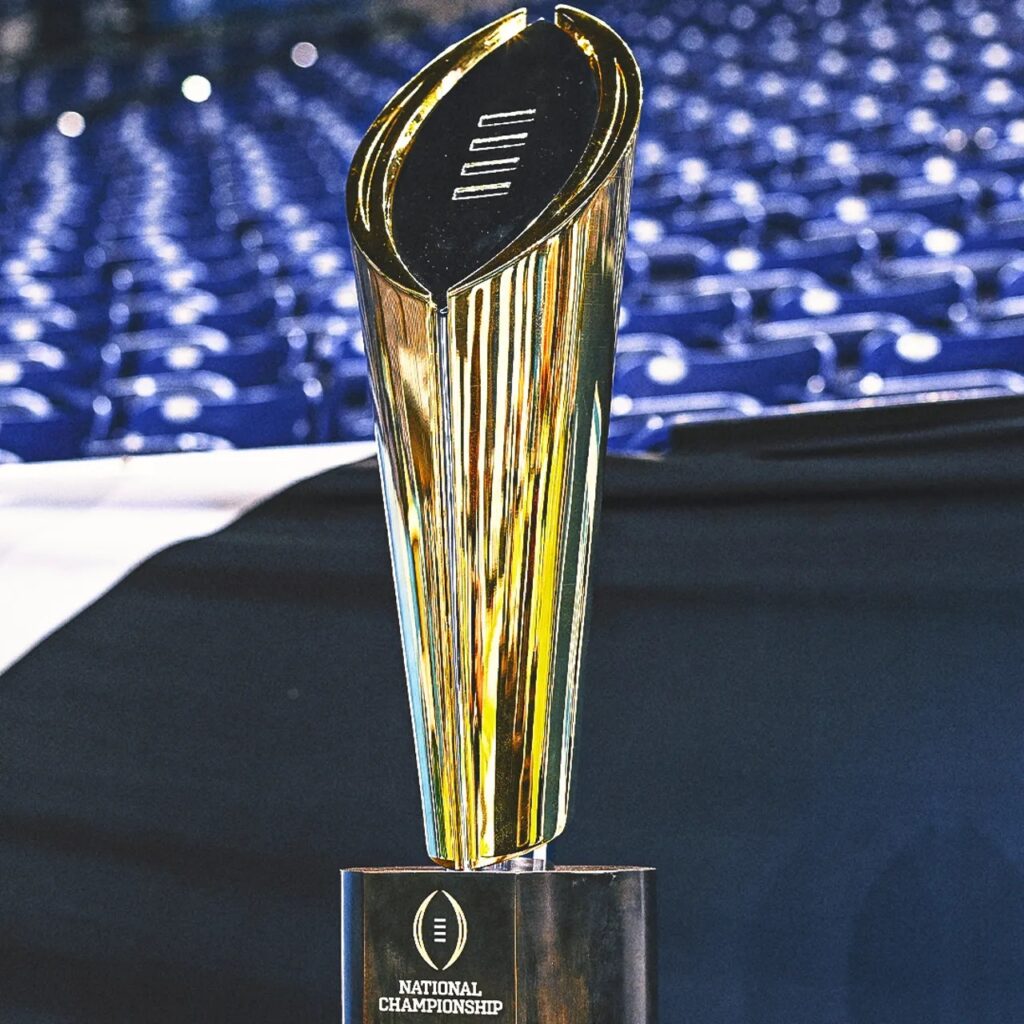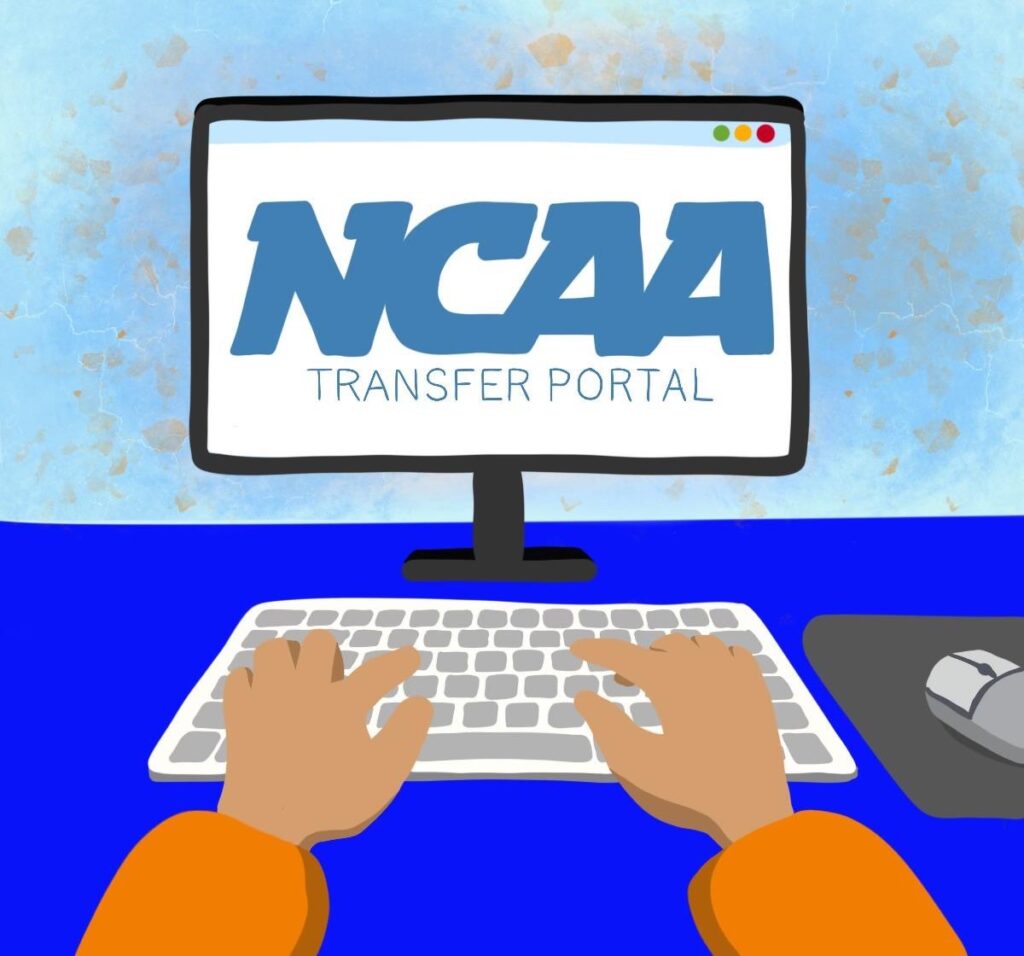
We want BuffsBlog.com to be your one-stop shop for all things Buffs. If you’re going to be a smart CU fan, you need to know what is going on within the football and basketball programs but also what is going on at a larger macro level. This blog post was written to help you become more informed to what’s going on in Boulder but also what’s going on in college sports generally. For our eagle eyed readers, there are 2 easter eggs in this post — a basketball scoop that folks might find interesting, and a 4-sentence editorial about the SEC.
Last, while I have you here — can you do us a favor and like/retweet this article within your social media networks? Even better, can you bookmark this site? We appreciate your help in making BuffsBlog.com the dumbest – and best – site on the internet for CU sports.
Now, onto the substantive stuff.
Buffs New RB Adds Backfield Depth

The Buffs bolstered their running back room by snagging Simeon Price, a 6-foot, 215-pound back who spent three years at Mississippi State before a season at Coastal Carolina. On paper, Price’s college production is modest (136 yards on 44 carries last year for a .500 Coastal team). But a deeper look shows why Deion Sanders and the football coaching staff might see value here.
Price earned a 61.6 overall grade from Pro Football Focus in 2024, a solid above-average mark given his limited touches. In fact, during the 2022–23 seasons at Mississippi State, he posted PFF grades of 65.2 and 67.6, indicating a reliably competent performer in the SEC. He even shined in pass protection with an 80.8 blocking grade last year – music to the ears of a team breaking in young quarterbacks. Price was a national recruit out of high school (a Mike Leach recruit), known for his combo of power and receiving ability. He had a breakout in the 2023 ReliaQuest Bowl, leading MSU with 68 yards rushing, but after Leach’s death he saw reduced action and took a redshirt.
Now with one year of eligibility left, Price arrives in Boulder as a no-risk, some-upside depth piece. The Buffs’ backfield is relatively green, so adding a veteran who’s faced SEC defenses and can pick up a blitz is savvy. Don’t expect Price to suddenly become an every-down running back, but in a rotation he could carve out a niche – short-yardage, third-down protector, occasional swing pass target. Under running backs coach Marshall Faulk, Price will have a Hall of Famer guiding him. If nothing else, his experience and pass-blocking prowess raise the floor of the RB unit.
Former Buff Returns to Sideline – Bringing International Recruiting Chops to Boulder….(and Italian Center to Join Team?)

Nate Tomlinson is back in Boulder, this time as a full-time assistant coach.
Former Colorado point guard Nate Tomlinson is back in black and gold, joining Tad Boyle’s coaching staff as an assistant and Director of Player Development. Tomlinson, a fan favorite from the 2012 Pac-12 title team, has been honing his coaching craft since leaving CU – including a stint in China under his father and recent assistant roles at George Mason and Providence.
Renowned for his international recruiting prowess, the Melbourne native has deep overseas ties that could open new pipelines for the Buffs.
[In fact, here’s a BuffsBlog international recruiting scoop for you — Colorado hosted an international big man last week that is a strong possibiilty to join the team this summer. His name is Leonardo Van Elswyk, a 7’1″ Italian center. He was ranked the #18 player in the 2025 class in Italy, and is a bit of a project. A plus shooter but needs to work on his strength and quickness. International hoops scout Arman Jovic has said he’s more of a shooter than an athlete at this stage. Still, you can’t teach height.]
Tomlinson’s return also means Boyle now has two of his most beloved former players on staff, with Evan Battey already in the fold. These alumni coaches bleed black and gold and understand the culture intimately. Tomlinson’s reputation as a recruiter and relationship-builder should pay dividends, perhaps especially in luring talent from abroad or uncovering hidden gems.
Beyond recruiting, he brings “sweat equity” and credibility – when he tells prospects about playing and winning at Colorado, he speaks from experience. Coach Boyle emphasized how lucky CU is to have Nate back, calling him a future head coach in the making.
College Playoff Expansion Update: Impact on CU?

We’ve talked before on BuffsBlog about the coming playoff expansion and how the power dynamics are at play. It appears those dynamics are shaking out in a predictable way: the SEC and Big Ten flexed, the other conferences pushed back, and a compromise seems to be emerging. The consensus that is slowly developing is a 16-team format with 5 automatic qualifiers and 11 at-large bids, beginning in 2026. In other words, the five highest-ranked conference champions would get in automatically, and the remaining 11 bids would go to the best teams regardless of conference. Why 5 AQs? Because with the Pac-12’s implosion, there are essentially four power conferences (SEC, Big Ten, Big 12, ACC) plus the “Group of 5” lumped together. For more background on this story, check out the recent BuffsBlog joint at: https://buffsblog.com/no-free-rides-why-fewer-automatic-bids-is-best-for-cus-future/
The SEC (along with Big Ten support) initially floated a radical “4-4-2-2-1” plan: under that proposal, the SEC and Big Ten would each be guaranteed 4 playoff spots, the ACC and Big 12 would get 2 each, and the top Group-of-5 champ would get 1 – leaving just 3 true wild-card at-large spots. Essentially half of a 16-team bracket would be earmarked for the two super-conferences every year, no matter what. Not surprisingly, that idea landed like a lead balloon with everyone outside the SEC and Big Ten. It was seen as brazenly protectionist — because it was.
ACC Commissioner Jim Phillips publicly called for “fairness and access,” clearly in opposition to any scheme that pre-allocates so many spots. Even ESPN, which will be paying over $1 billion a year for the playoff TV rights, quietly signaled discomfort with a format that might produce, say, a 9-3 SEC team automatically in while a 12-1 smaller-conference team gets left out. The backlash worked – the SEC has backed off the 4-4-2-2-1 concept in recent weeks.
Now the focus has shifted to the 5+11 model, which is much more straightforward. Every power conference champion (assuming Power 4 plus one highest-ranked from the rest) would be in, and then the committee picks the next best 11 teams. No guaranteed “four SEC teams” nonsense – though in practice the SEC and Big Ten will still likely put a ton of teams in via at-larges. And that right there is the key: the selection criteria. The SEC, never to be outmaneuvered, is now insisting that if it concedes on the auto-bid allocation, the selection committee’s criteria must heavily weight strength of schedule (and related metrics like strength of record, FPI, etc.). Essentially, “Okay, we won’t rubber-stamp four SEC teams every year, but we all know our third-place team’s schedule is tougher than some champion of another league, so make sure the committee accounts for that and we’ll get our 4+ bids anyway.” During the SEC’s spring meetings, they even handed out a glossy pamphlet to media titled “A Regular Season Gauntlet,” laden with stats showing the SEC’s dominance in SoS and other metrics over the last decade. They want those numbers front and center when the playoff field is picked. The Big Ten is naturally on board with that – they also benefit from SoS emphasis, given their league depth.
Quick editorial: The SEC dominated college football when it was the only league that paid players. Since all teams can now legally pay players, we’ve seen the Big 10 and other leagues flex relative to the SEC. Coincidence? Nope. End of editorial.
Conference commissioners from all leagues are meeting this week, and a big agenda item is tweaking the CFP selection protocol, particularly how to incorporate strength of schedule or “quality of wins” in a more formal way. Currently, the 13-member committee uses its judgment and some guidelines, but there’s a push to codify things a bit more to avoid controversy.
Don’t be surprised if we see a new metric or formula introduced (or an existing one like Strength of Record given more weight) to help rank teams 1 through 16 in a way that appeases the power conferences.
For Colorado fans, the likely outcome – a 16-team playoff with 5 auto bids – is a mixed bag that leans towards the positive. On one hand, the Big 12 champion will certainly have a spot each year, so CU’s path if they win the conference is clear. On the other hand, there are no guarantees for a second Big 12 team unless it’s ranked high, meaning a strong runner-up might need to rely on a committee nod. The expanded at-large pool (11) is so large, though, that if the Buffs are good, they’ll make the playoffs.
All told, the playoff is going to expand and become more “open,” but the power players are ensuring they still dominate the access. The guess here is we’ll see an official announcement of the new format by this fall. Expect a 16-team bracket starting in 2026, the five conference champs (likely the Power 4 + best of the rest) get automatic tickets, and everyone else fights for the remaining 11 spots based on ranking. The SEC and Big Ten will publicly praise the compromise while privately grinning, knowing that in most years many of those at-larges will be theirs anyway. For the Buffs, the mission doesn’t change: build a program that can compete for a Big 12 title, or at least stay in the national top 15 conversation. Do that, and the expanded playoff will absolutely feature Colorado in the not-too-distant future.
College Football Calendar Overhaul Coming?

There’s a growing consensus that the current college football calendar – with its overlapping recruiting periods, transfer windows, and coaching carousel – is, frankly, a chaotic mess. The prime target for reform is the transfer portal schedule. Presently, there are two main portal windows (one in early winter right after the season, and another after spring ball). The talk now is about moving to a single transfer window per year to simplify things. The big debate is when that one window should be: January or April?
Each option has its advocates. A January transfer window (immediately after bowl season) would let players who know they want out enter the portal quickly and enroll at a new school for spring semester. Coaches would prefer this in some ways, because they can address roster holes sooner. It aligns with the timing of the NFL draft declarations as well. If a player is unhappy with playing time or a coach gets fired in December, they don’t have to linger – they can transfer in January and get a fresh start for spring practice elsewhere. This would also take pressure off the end of April, which is currently a second frenzy of transfers.
However, critics say an immediate post-season window might encourage rash decisions and doesn’t account for the new coaches wanting a chance to re-recruit players in spring. Also, it overlaps with bowl prep and the early signing period, adding even more to a jam-packed December for staffs. (Which raises another tangent: there are discussions about moving the early signing day too, but that’s another story.)
On the other hand, an April (post-spring) transfer window means players stick with their teams through winter workouts and spring practice before deciding to leave. The advantage here is information – both the player and the coaching staff get to see where things stand after spring depth charts are set. Maybe a third-string QB realizes he’s still buried and then transfers in April. Or a new coaching staff can conduct spring ball, then gently encourage certain players to seek opportunities elsewhere. This one-window-in-April idea might reduce the rush of December departures and give a fighting chance to new head coaches who take over in December to convince players to stay for a few months. It also keeps rosters more intact for bowl games (which were hit hard by December transfers).
The downside, though, is timing: players who transfer in late April or May then miss spring football at their new school, essentially not joining until summer/fall camp. Additionally, teams losing a bunch of guys in May will have fewer options to replace them, since the recruiting class is long signed and most transfers would have already moved in January under the current system.
The NCAA football oversight committees are actively discussing these proposals, and it sounds like some change is imminent. The current calendar is widely viewed as unsustainable, with coaches juggling playoff prep, bowl games, firings/hirings, the early signing period, and a flood of portal entries all in December.
A single transfer window could at least consolidate the chaos into one part of the year. According to reports, officials are torn on which timing is better – January vs. post-spring – and there’s talk of perhaps a compromise like a very short winter window for grad transfers only and a main window after spring.
One thing is clear: the status quo isn’t working for most programs. We might hear concrete proposals by later this year, with coaches pushing to implement changes by the 2025 cycle. Stay tuned, because the way players transfer and the rhythm of the college football offseason could look very different a year from now.
Good bites. Do you do a podcast too?
Not yet….if someone is an expert at podcast tech, hit me up.